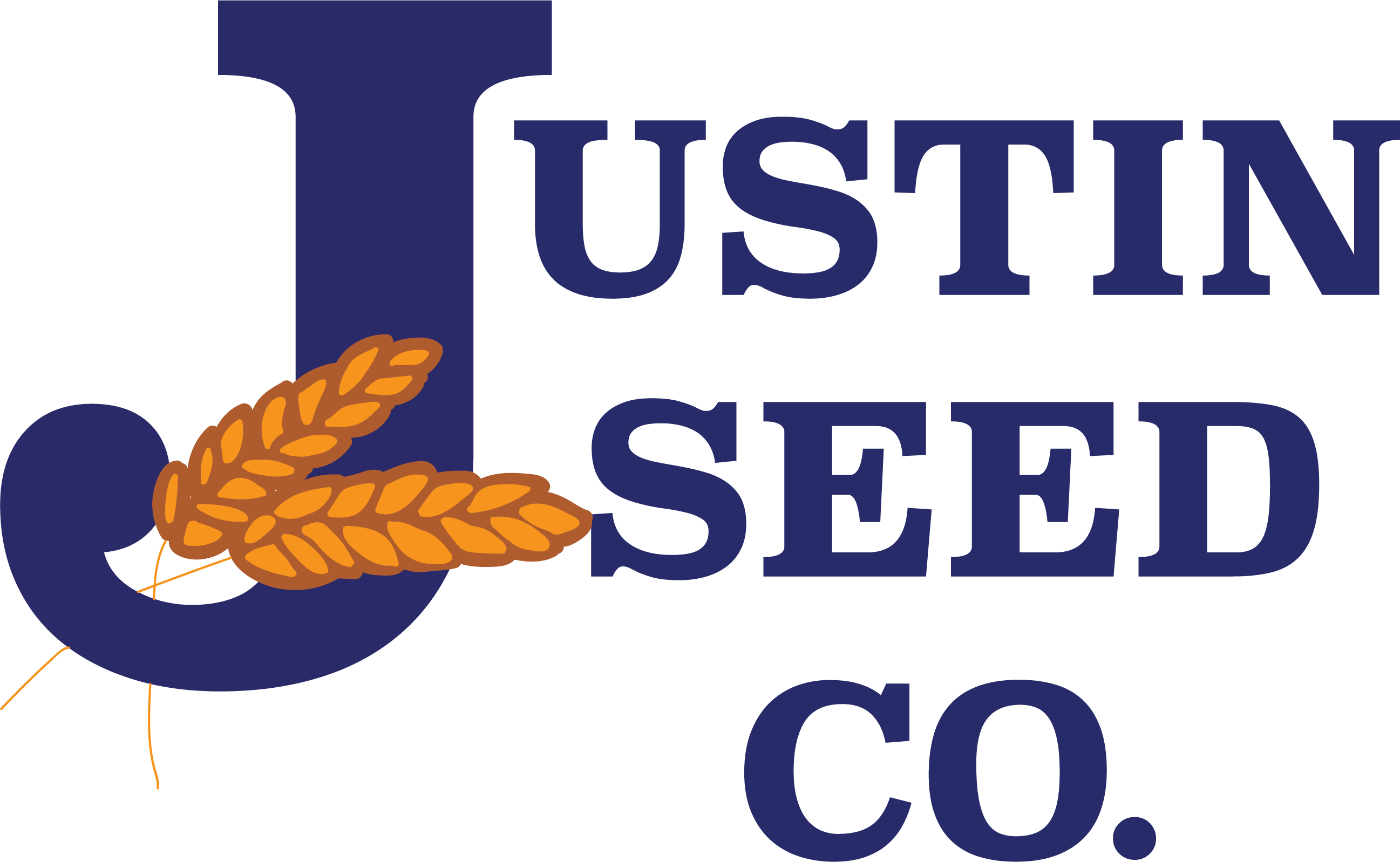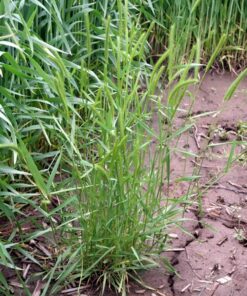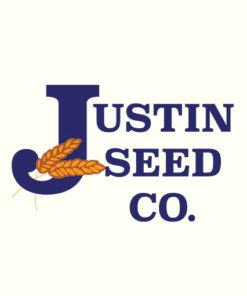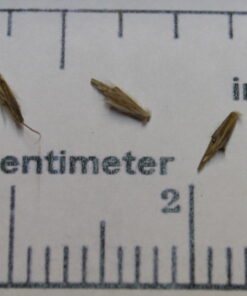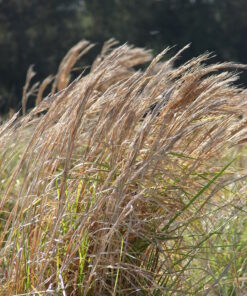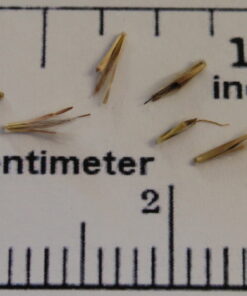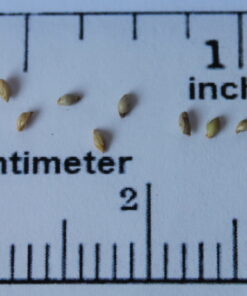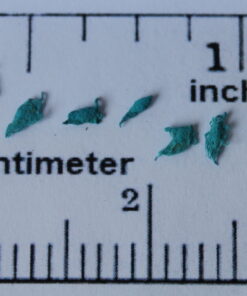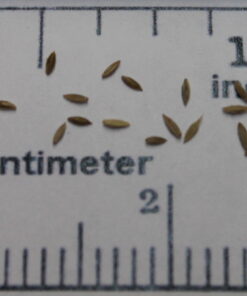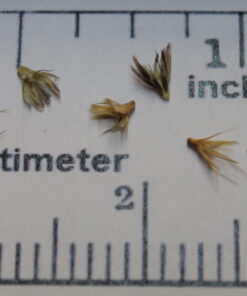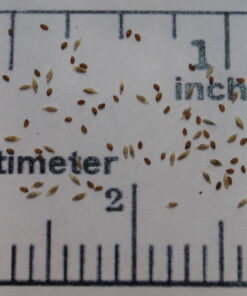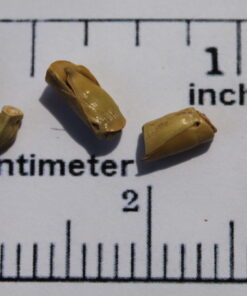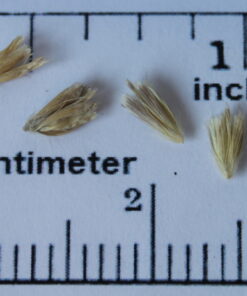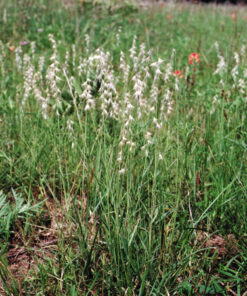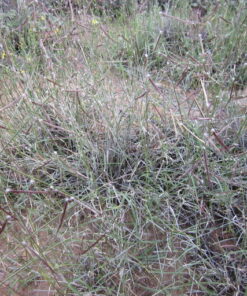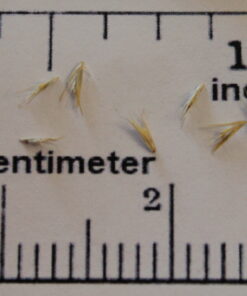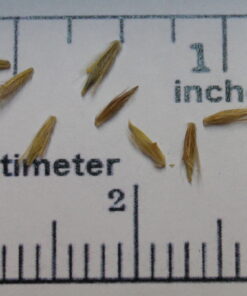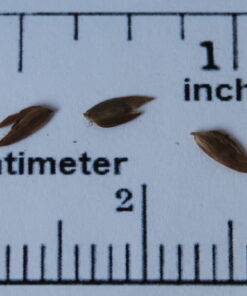An annual grass with each stem bearing an unbranched, erect, flattened, bristly spike of narrow, crowded, greenish-brown spikelet.
A native, warm-season, short-lived perennial bunchgrass. The height is between 2 to 3 feet. The leaf blade is 2 to 8 inches long. The stems are round at the base, but sometimes branching at nodes.
Excellent forage grass for grazing or hay, but can easily be killed by over grazing. It can provide good cover for wildlife.
A native warm-season perennial bunchgrass. Broomsedge bluestem produces many seeds on the upper half of the plant that are distributed by the wind.
Good drought tolerant native pasture and range grass. The perennial bunch grass grows in late spring and continues throughout the summer providing screening and nesting for wildlife.
Typically occurs in upland sites on sandy soils in open pastures, borders of woods, and cut woodland pastures. Appearance is similar to Little Bluestem but with split seed head (inflorescence).
Found on open, dry ground, in dry woods, and on well drained soils along gullies, stream courses, and other areas, occasionally, with abundant moisture.
Good pasture and Turfgrass. Short grower--6" to 1'. Very drought resistant requiring very low maintenance as a turfgrass. Buffalograss is a dominant short prairie grass frequently found in overgrazed pastures.
Recommended for use in parks and playgrounds, golf course roughs, commercial and residential lawns, erosion control, pastures and highway right-of-ways. Short grower--6" to 1'.
Warm season annual showing promise for pasture. Native, warm-season, perennial bunch grass.
Warm season vigorous plant that grows faster than most other turf grass. It grows well under stress conditions such as drought, low fertility, and high traffic areas.
Short growing native that has stolons much like buffalo grass. Pale green in color and not a vigorous competitor. Grows in a wide variety of soils.
Warm-season, weak, perennial bunch grass with slender, erect stems. Found in most regions of North America often in sandy soils and is one of the most common roadside perennial grasses.
Native North American prairie grass growing from two to four feet tall. Also called rough dropseed and meadow dropseed it is common on the Great Plains and found in most states in the United States, likes dry soils of prairies and plains.
Tall, bunch, warm season perennial grass with very coarse leaves. A native, warm-season grass. Provides good forage for livestock and wildlife.
Generally described as a perennial graminoid. Is native to the Southwest with a long life span and moderate growth rate.
Native to Texas and Oklahoma. Texas Grama has bell-shaped seeds, larger than those of Sideoats Grama.
A short-growing stoloniferous perennial native. Choice forage grass grazed by all livestock and occasionally cut for hay in wet seasons.
Drought resistant plant. Highly adaptable to dryer areas. Also tolerates soil conditions from fair salinity to moderate alkalinity. A highly palatable grass.
Drought resistant plant. Highly adaptable to dryer areas. Also tolerates soil conditions from fair salinity to moderate alkalinity. A highly palatable grass.
Cool-season (C3) native perennial bunchgrass. It grows to a height of 18 to 36 inches.
Tufted perennial with stems and without stolons or rhizomes. Native to North America. Grows mainly on loose, rocky, well-drained soils.
Native. Top range and pasture grass. One of the Big 4 Prairie Grasses. Varieties: Cheyenne, and Lometa.
Native bunch grass that spread by short rhizomes and good root depth. Shade tolerant.
